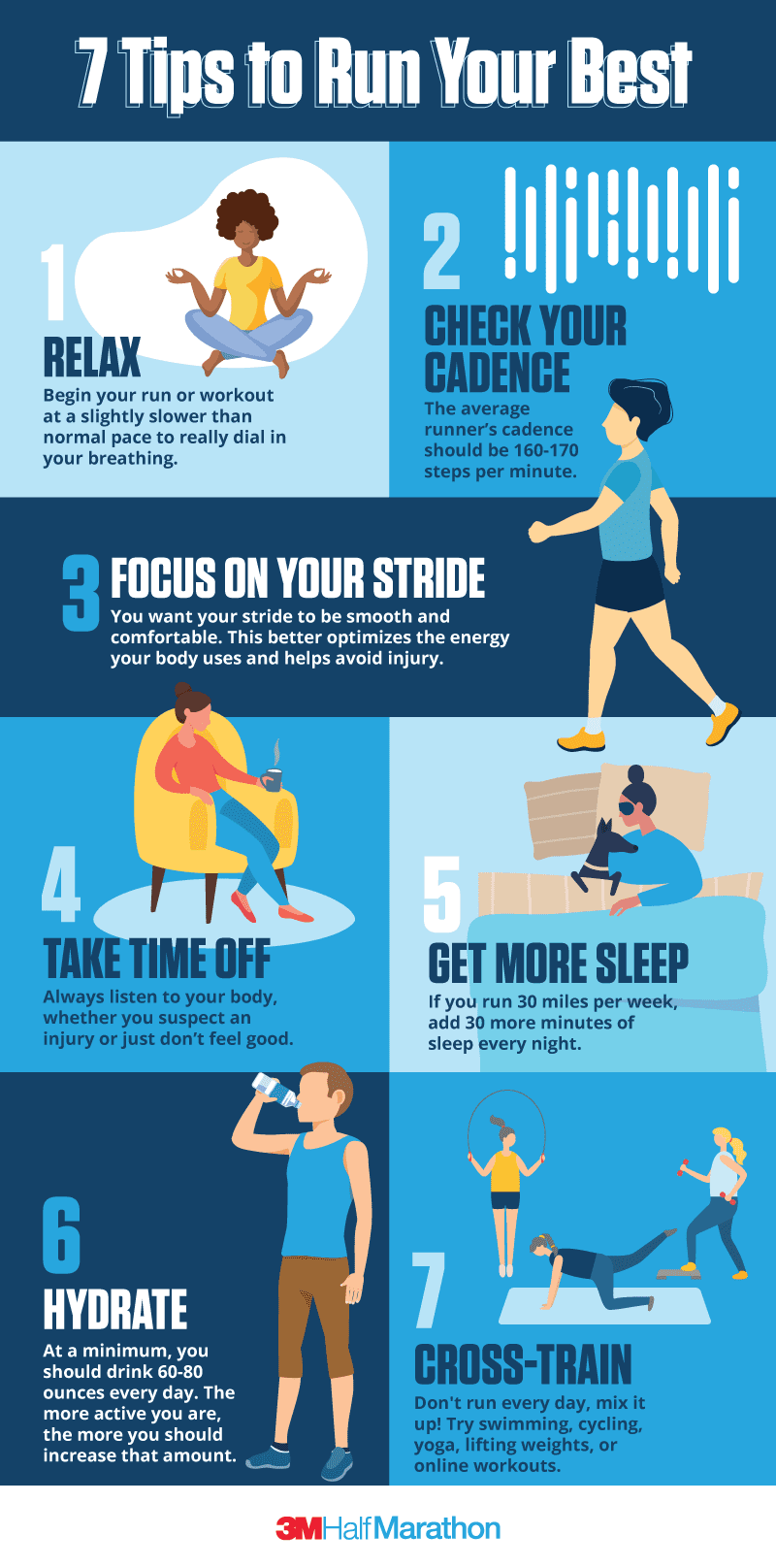These 5 excuses busters will keep you on the path towards your goals
We’ve all been there. We have the best intentions of following a workout routine, but sometimes life gets in the way. Next thing you know we’re skipping more runs and workouts than we should. There’s good news, you’re not alone and these excuse busters just might be what you need! The goal is to anticipate these situations and be prepared. Below are 5 excuse busters to the most common reasons for skipping your run or workout. Pro tip: include this effective 10-minute warm-up before your next run or workout.
-
You’re too tired
Taking time off when you’re tired is important, but sometimes a workout is just what you need to get a boost of energy. Exercise increases blood flow and the release of serotonin and dopamine. All of which will help make you feel better.
Solution: Maybe your regular workout is not ideal if you’re tired. Try less-intense exercise such as yoga or walking. They can be just as beneficial. You’re getting outdoors, enjoying fresh air, and increasing your blood flow. Pro tip: speed up the recovery process when you follow this long-run recovery timeline.
-
Not fun anymore
Getting out the door for your next workout is easier to skip when it’s not fun anymore. You can justify skipping that run or ride because you don’t get the same type of enjoyment. Chances are high that you’re getting burned out.
Solution: There are some options to making your workouts fun again! Try updating your playlist. These tunes might be just what you need to get going again. Plus, you’ll look forward to the next song. Switch up your routine. If you run on the roads, try the trails. If you ride the same loop on your bike switch it up. Lastly, meet up with a friend or two. Working out with friends is a great way to pass the time during your workout. Pro tip: check out these hilarious running memes and remind yourself why you love to run.
-
Not enough time
Life can be crazy sometimes. When we look at our packed schedules we might think the last thing we have time for is a workout. Try this, instead of finding time to work out, make time to work out.
Solution: You don’t need to work out for an entire hour to get the benefits from exercise. Sometimes 30 minutes can be enough. Try waking up 30 minutes early to exercise. Take some time off during your lunch break to ride your bike. You can also multi-task. For example, how about doing some body-weight exercises while you binge-watch your favorite series? Also, if kids are preventing you from working out, you can get them involved in your routine. Schedule family walks/runs/bike rides around the neighborhood.
-
Just not motivated
Sometimes improving our health or getting a PR in our next race is not motivating enough to help us stick to a workout routine.
Solution: Set smaller, short-term goals that are realistic and achievable. While setting big goals is important, it might take a long time to accomplish them. You might become unmotivated over time. For some people, having someone else to exercise with can be very motivating. Finding yourself an accountability partner can be helpful. Lastly, doing something that is not fun is definitely not going to be motivating, so find a type of exercise that is fun for you!
-
Missed the last run or workout
It’s easy to justify passing on a run or workout when you missed the last one. But don’t! You don’t have to necessarily make up what you missed, but continuing with your plan is the best choice for you.
Solution: If you missed a morning run, try completing it in the evening. If you miss the run entirely you have some options. You can move forward and continue with your training plan. Another choice is to switch the missed run with your rest day since you essentially had a rest day. Both of these options help you stay on track with your training.
Whether it is a lack of time or motivation, we’ve all made some excuse to skip a workout here and there. The good news is that there is always a way to defeat our excuses. Make it a priority, and prepare to crush your next run or workout with these excuse busters! No more skipping your run or workout with these 5 solutions.

